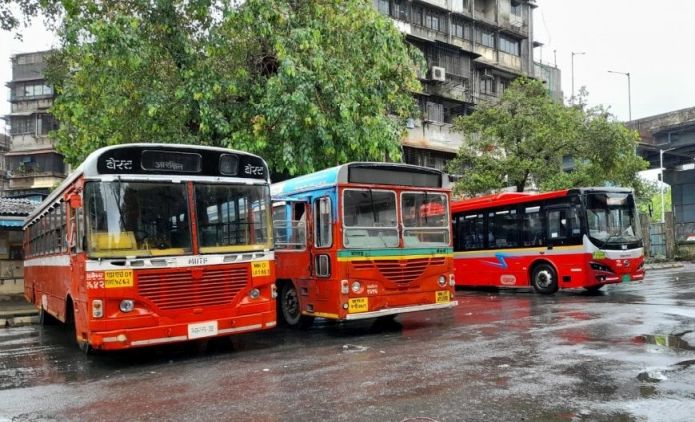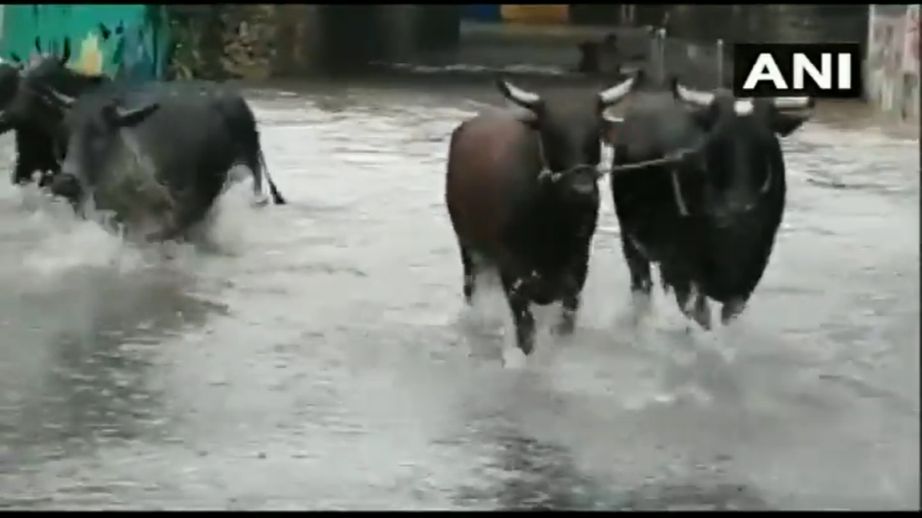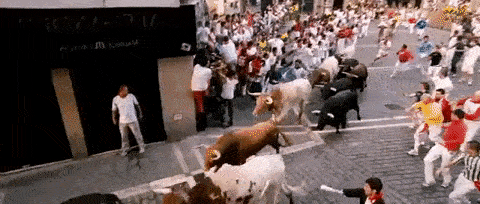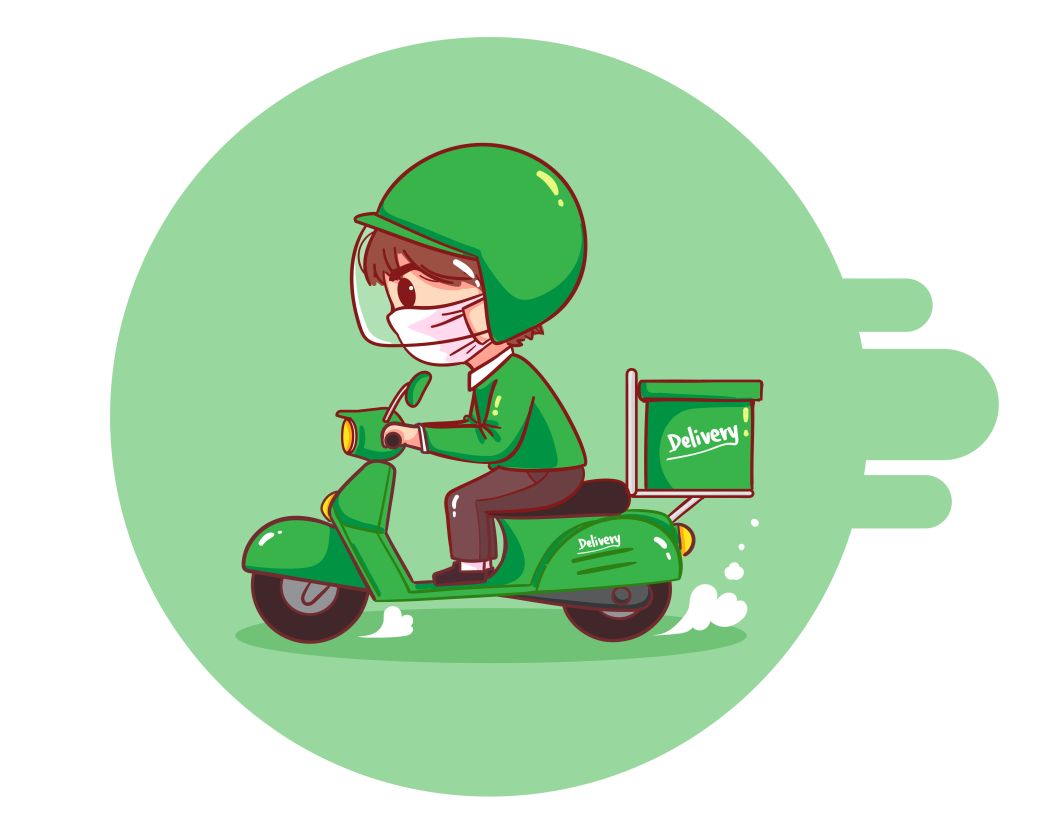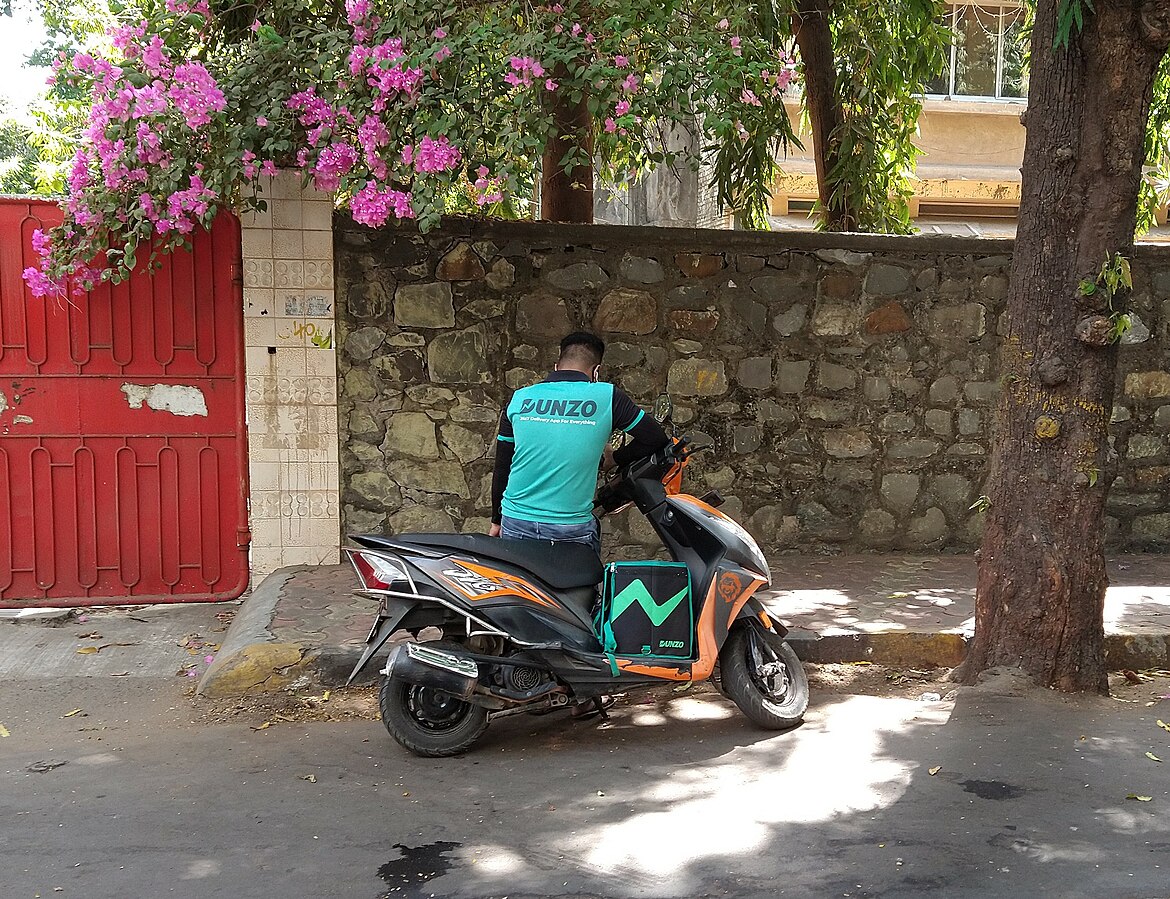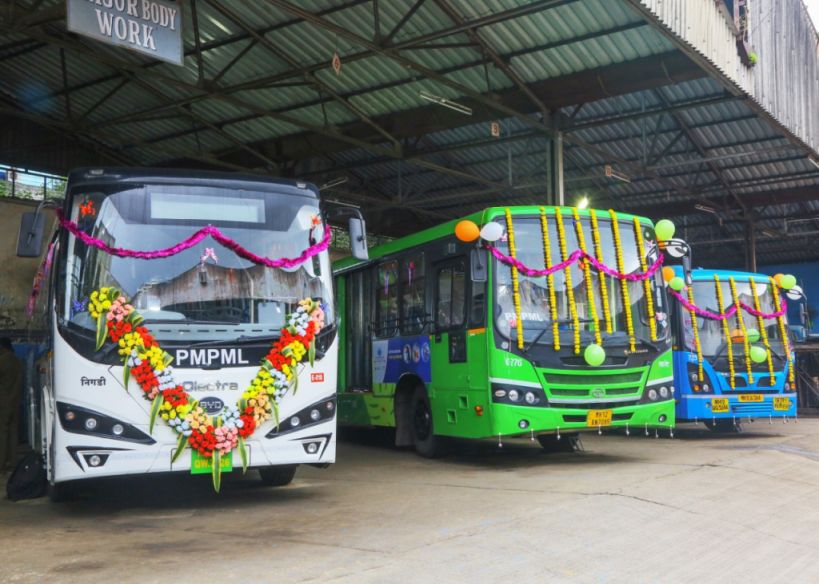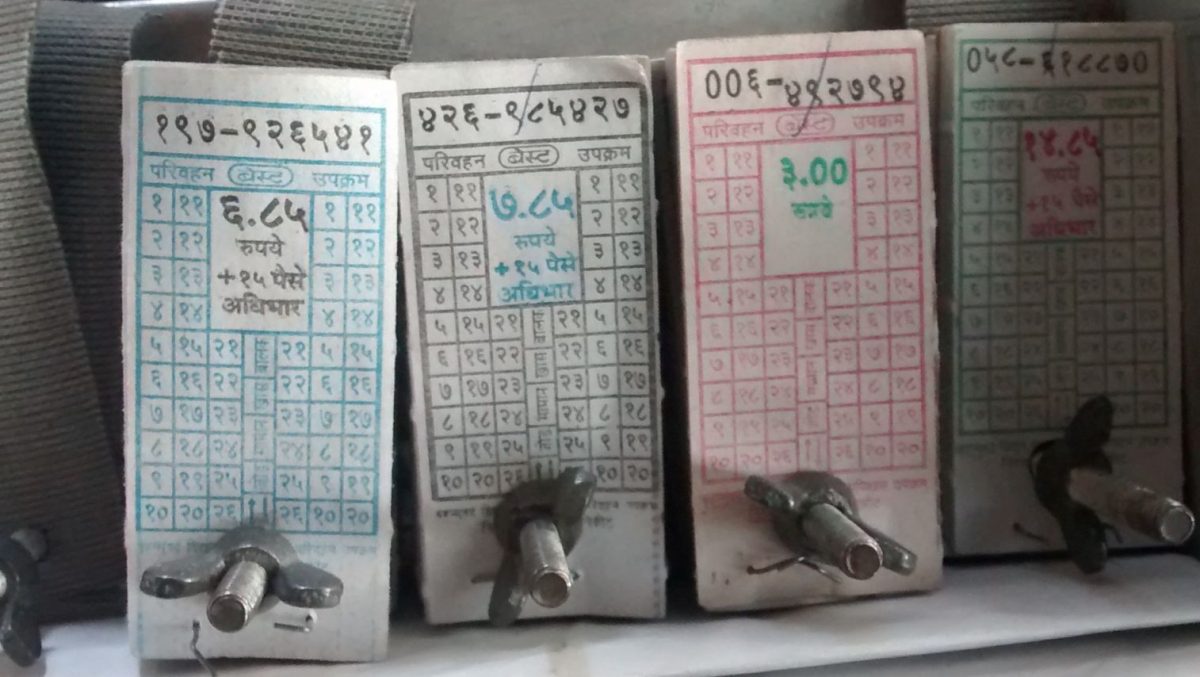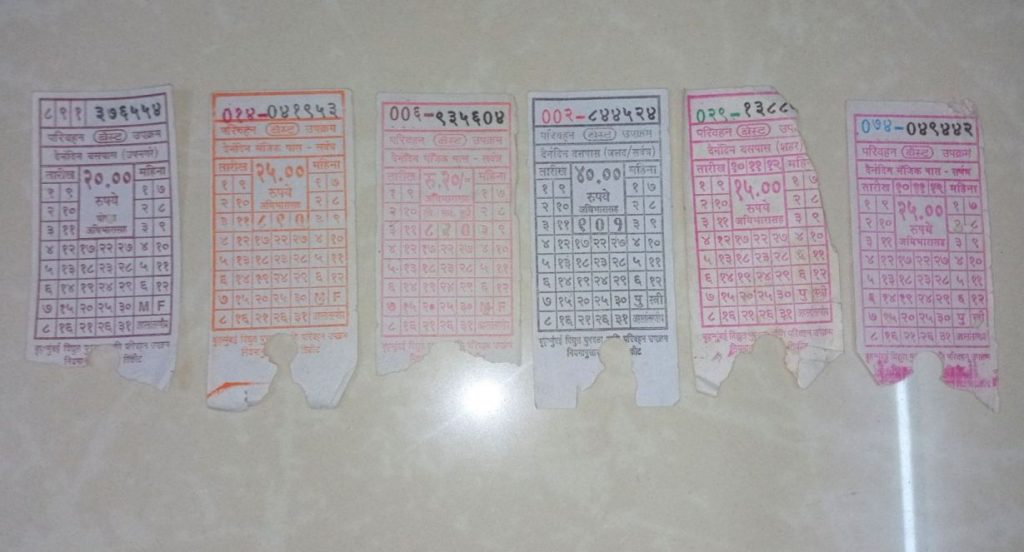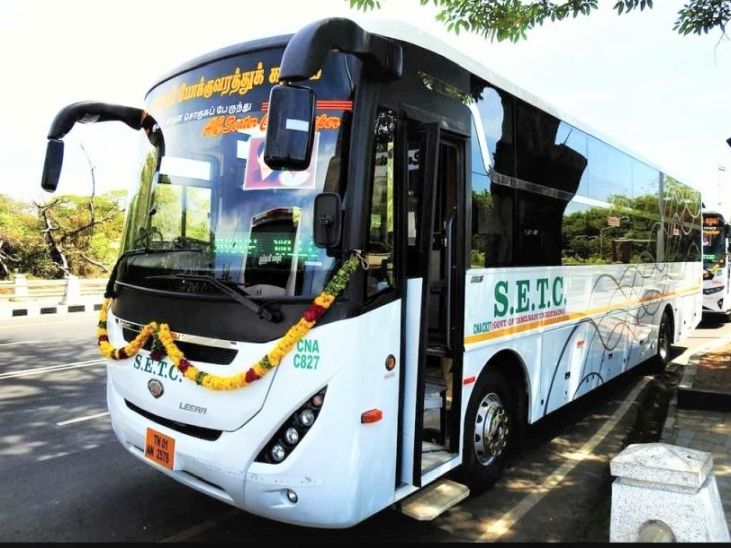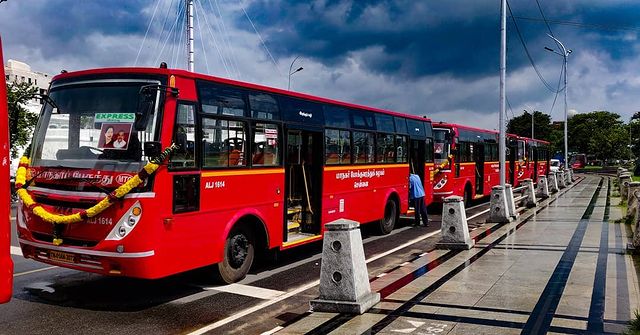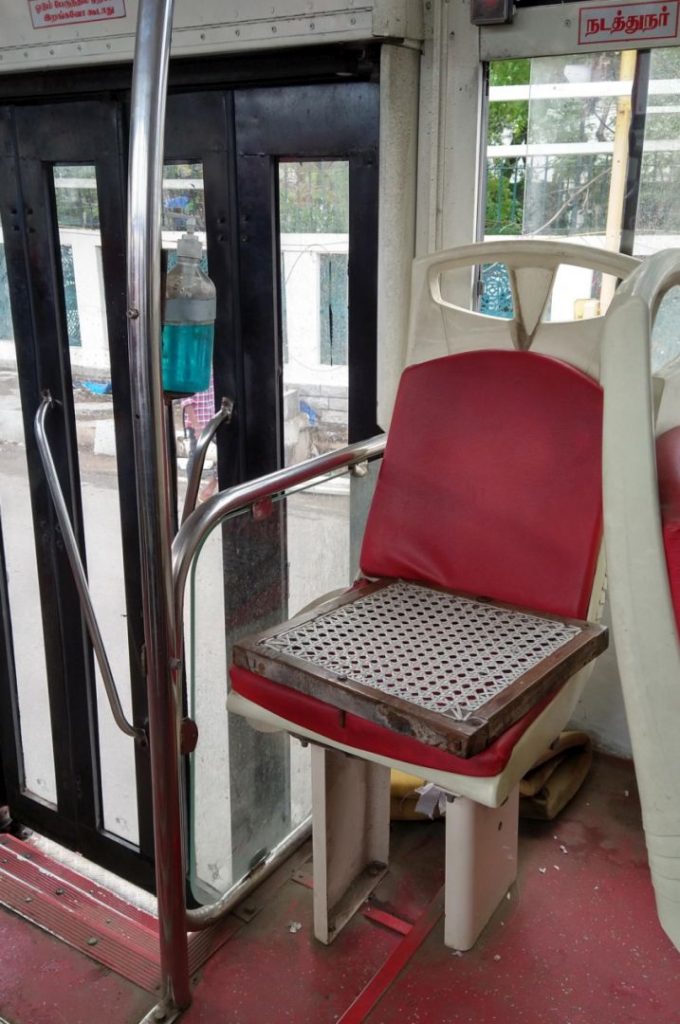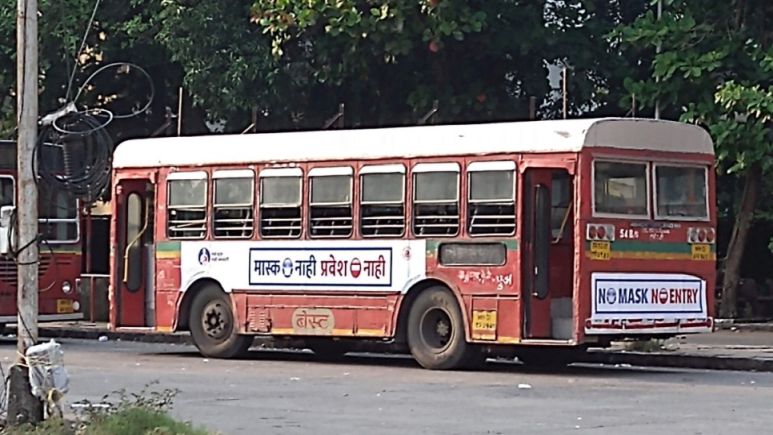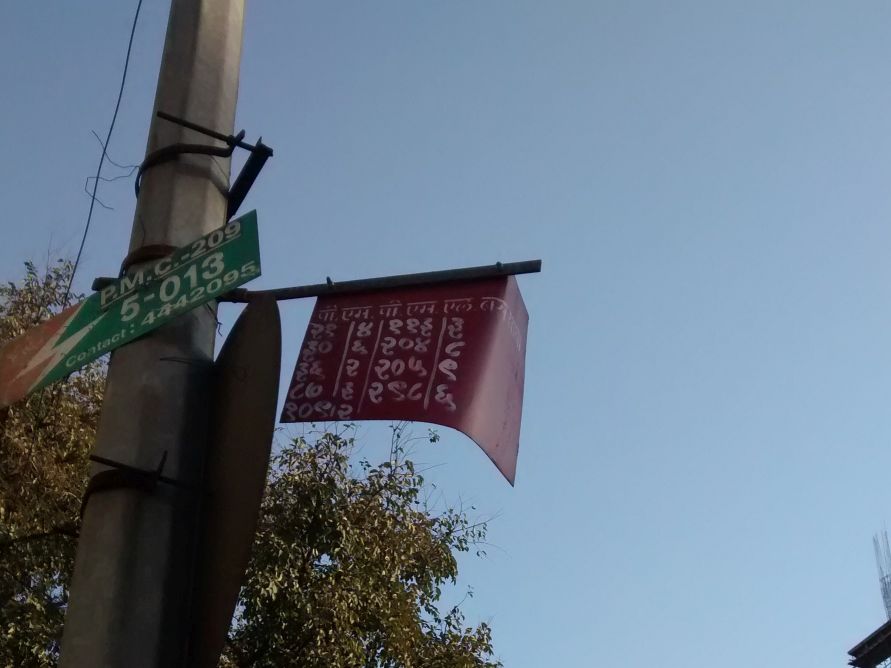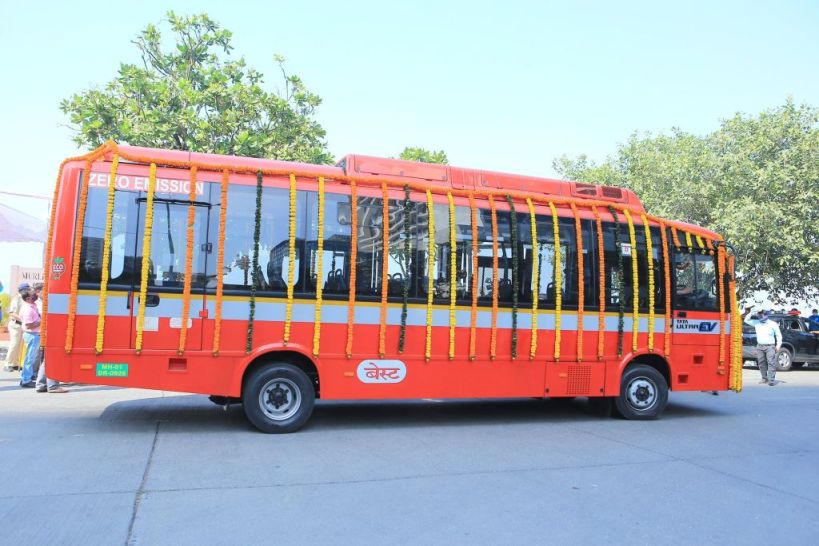For the first time in the history of Mumbai, the Brihanmumbai Electricity Supply and Transport (BEST) undertaking is facing a huge shortage of buses. Once considered the pride of Mumbai and Asia’s best bus service, often compared with London, is now in a poor shape. Back in 2004-05, BEST had 3400 buses in its fleet and carried 45 lakh passengers. Long distance routes were fewer, and priority was given to feeder routes catering to the nearest railway station. Things went downhill from 2010, when the first fare hike happened. Followed by subsequent fare hikes in 2012, 2013 and 2015, along with an increase in ownership of personal vehicles (especially two wheelers) and share autos covering many parts of city, many people have given up on using buses. Although the fleet strength was around 4500, the passenger numbers were much lower than before, touching the 30 lakh mark. The 2018 fare hike was a disaster and the passenger numbers went as low as 15 lakh per day. In July 2019, BEST announced a 50 per cent fare cut. While it did manage to get back passengers, seeing around 20-25 lakh passengers per day, revenue took a hit and the pandemic made things just worse. While this is not completely relevant to the main topic of this article, it shows how BEST lost its glory and the number of passengers over the years to other modes of transport.
History of the BEST fleet (2000- present):
Talking about non-AC buses, as a child, I remember seeing only the classic old diesel-powered Vikings buses from Ashok Leyland. All buses used Rolling cloth displays. A single Decker full sized bus accommodated 47-49 seating passengers and 20 standees (the actual number of standees definitely exceeded this number in peak hours). Double Decker Vikings, which were basically a taller version of Single decker Vikings were also quite popular back then, most of them had a single cabin for the driver which was separate from passenger area and had a single, wide rear door. Newer models which were last procured in 2008-09, had double cabin. This change in style was because the single-cab design made it difficult for mechanics to access the engine.
Later on, around 2005, BEST started introduction of new buses under the World Bank-funded Mumbai Urban Transport Project (MUTP Phase-1). Around 644 buses were supplied under this project. Even these buses were manufactured by Ashok Leyland, but had better suspension, better speed and acceleration compared to the older buses and impressive looks.
In 1997, BEST introduced the first ever CNG-powered bus in it’s fleet which was a CNG version of the same old Leyland Vikings on its 50th anniversary post municipalisation. Post that, by 2001, BEST got it’s around 40 CNG-powered buses from Ashok Leyland (in 82xx and 87xx series). Many CNG buses were received between 2004-2006 from both Tata and Leyland (in 79xx and 3xxx series) which had the same old Vikings design. But the Tata CNG buses procured in 2007-08, the buses built by various coach builders (5xxx series) were terrible — to say the least. While I’m not sure if the Engine had less power or not maintained well, many of these buses struggled to climb flyovers and ghat sections like Ghodbunder road. As of today, many of these buses have been rebuilt and working in better condition. Some CNG Midi buses built by Ashok Leyland, with a seating capacity of 35 passengers and 15 standees were also procured. By 2009-10, BEST started to receive around 800 buses under the Jawaharlal Nehru National Urban Renewal Mission (JNNURM) which were manufactured by Ashok Leyland. These buses were the first ones to have a digital display, four per bus: front, side, rear and one inside the bus, displaying in Marathi and English. Quality-wise, the buses were as good as the MUTP ones, but were powered by CNG. Few Midi buses of the same model were received, too. Post that, no new buses were procured until 2016-17, when 186 brand new Tata ACGL diesel buses were procured. It had an improved design, more standing space and forced ventilation. The latest addition to the fleet was 6 electric buses manufactured by Olectra (formerly BYD Goldstone) which were housed at Backbay depot, operating on route 138 from Chhatrapati Shivaji Maharaj Terminus to Backbay Depot.
Talking about AC buses, a lot had been already said earlier. BEST had introduced AC buses way back in 1998. In 2007, BEST got the first of its 285 infamous “Purple Faeries” which were advertised as Chinese Kinglong buses but were actually built in Punjab under the brand name Cerita. Around the same time, BEST received a CNG version of Volvo 8400 for trials for a few weeks, after which it was returned without any purchase orders. Later on, BEST signed an agreement with Asian Concierge to procure 50 Diesel-powered Volvo 8400s in exchange for full body advertisements on them for 15 years. However, only six buses were procured. All of them belonged to the Oshiwara Depot and used to ply on AS-4 between Oshiwara Depot and Backbay Depot. Fast forward to 2017, all AC routes were suspended citing low passengers. A few of the Ceritas that were converted to non-AC continue to be in operation, while the six Volvo 8400 buses lie rotting in Oshiwara depot.
AC buses came into light again in 2018, when Tata gifted the MMRDA, 25 Diesel-Electric Hybrid buses, which in turn were provided to BEST for running AC buses in BKC. Buses ran from Borivali, Andheri, Thane, Mulund and Kharghar till BKC in the morning peak hours, served the Bandra Station- BKC and Kurla station- BKC routes whole day before returning to suburbs in the evening peak hours.
In 2019, after a great hue and cry over wet-leasing of buses, fearing loss of jobs of existing drivers and conductors, workers’ union agreed upon running of wet-leased buses on one condition, maintaining BEST’s owned fleet at 3337 buses which was the existing fleet in June 2019 when the deal was made. A memorandum of understanding (MoU) was signed by BEST with the BEST Workers’ Union. For every scrapped bus, BEST was required to buy a new bus. Drivers would be provided by the leasing company, while conductors would be provided by BEST (buses would operate conductorless and ticket sales would happen at the bus stop).
Finally in September 2019, the first ten wet-leased Midi buses (6 AC and 4 non-AC) were inducted into service. The electric buses were obtained under Faster Adoption and Manufacturing of Electric vehicles (FAME-I) scheme. These were housed at the Kalakilla depot and started plying on Route 302 (Mulund Check Naka- Sion), later extending to routes C-42 (Dadlani Park Thane- Sion), 352 (Sion- Trombay) and other routes too as more and more buses started to come into service. In October 2019, for the first time in the history of Mumbai, BEST introduced Force Mini AC buses in the fleet (Tempo Travellers). The first of these buses made its appearance on route A54 and A55 plying between Kohinoor Parking Lot and Siddhivinayak Temple. The route was curtailed due to low response, but these tempos were a hit when the services were started in Andheri West. Thus, more and more of these buses started to serve other areas of Mumbai too. Later on, in January 2020, BEST got its first set of 500 Tata Marcopolo Midi CNG AC buses, which started operating in Grant road- Tardeo area under the Mumbai Central Depot, later on extending to other depots as well. The latest addition to the Wet-leased bus fleet was Tata Midi Electric AC bus in December 2020. 26 of these buses were delivered to BEST, which initially started operating on 138 (Backbay Depot- CSTM) and 25 (Backbay Depot- Sion) routes, later extending to other routes and recently allocated to Shivajinagar and Malvani depots. A total of 340 such buses are to be procured under FAME-I scheme.
Now, coming to the shortage of Buses
Since the Ashok Leyland Vikings, both diesel and CNG converted ones were becoming old, and had completed their 15 years of service (which is the validity of Registration Certificate of any vehicle in India), BEST had started the process of scrapping these buses. Before Covid-19 pandemic hit India in March 2020, BEST had a total of 3,253 owned buses. Despite the pandemic, trains being shut for common people, BEST kept on scrapping buses as they completed their 15-year life despite being in good condition. According to a notification by the Ministry of Road Transport and Highways (MoRTH), all vehicle documents including the registration certificate were extended till September 2020, and further extensions were given till December 2020, March 2021 and now up to June 2021. Why BEST continued to scrap buses after the MoRTH notification and increased demand due to local train closure remains a mystery. Let us keep that apart for a while. Why didn’t BEST legally extend the validity of the registration certificate by paying ₹1,500 per bus (the rates have increased lately in March 2021, but this was about last year) instead of procuring MSRTC buses from all over Maharashtra at ₹75 per km? A fellow bus enthusiast mentioned that BEST had difficulty in procuring spare parts for the older buses due to pandemic. BEST has managed to scrap a total of 1,200+ buses during the current pandemic which is really saddening. As of August 2020, BEST had a total of 120 Double Decker buses, which were helpful in operating on long distance routes like 440 and C-42 due to their carrying capacity in absence of local trains, are now reduced to 45.
The current BEST owned fleet stands at 2,010 buses. This includes around 800 Ashok Leyland JNNURM buses, around 600 Tata CNG buses, some Ashok Leyland CNG Midi buses, 25 Tata AC Hybrid buses, around 180 Tata Diesel buses, 6 Olectra non-AC Electric buses and 45 Double Deckers. The last surviving 6 MUTP buses which had its farewell ride few days back is now going to be scrapped.
The total fleet of BEST including wet-leased buses currently stands at 3,323 buses. The first violation of the MoU is the fact that BEST is not maintaining its owned fleet at 3,337 buses. BEST has not chalked out any plan to buy new buses, even before the pandemic started and buses were already being scrapped. Now one may ask, what difference does it make if the buses are wet- leased or owned as long as it runs the required no of buses? Agreed, although the MoU is of concern to existing working staff of BEST, it does not make a big difference to the passengers if BEST manages to maintain the required number of buses. So why am I writing this? Because the wet-leased bus fleet, a total of 1,313 buses are all Mini AC buses or Midi AC buses, which are now operating on routes previously operated by Full-sized buses. This basically means a huge reduction in carrying capacity (almost 40-50 per cent per bus) unless they increase the frequency of buses on all routes.
The current fleet is so less that it cannot even handle the passenger load in normal times and the pandemic has made it even worse. Adding to the woes, due to lockdown imposed by the Government of Maharashtra again from April 2021, common people were disallowed to use trains while buses were restricted to one passenger per seat and no standees. Waiting time has increased on many routes. Intermediate passengers don’t even get a chance to board the bus since the allowed number of passengers (24 per full-sized bus, 15 per midi bus and 10 per mini bus) are already filled up at the origin bus stop. Starting September 2020, BEST had started inducting hired MSRTC buses in its fleet, along with experienced drivers and conductors, which were lying idle due to lesser services across the state. A total of 1,000 buses were leased, but MSRTC started to reduce the fleet since February 2021, when local trains were partially opened to common people. By May, only 500 MSRTC buses were operating and as of today, publishing this, MSRTC has completely withdrawn its fleet from BEST. There were some operational issues too which is a completely different topic.
While BEST did manage to do its BEST, by running maximum possible number of buses on important routes (40 ltd, 440 LTD, C-71 Exp, C-72 EXP, 202 LTD along the Western line and 302, 368 LTD, C-42 EXP along Central line) during the pandemic, the shortfall of buses was clearly evident. Seeing the woes, BEST should start inducting full sized buses in its fleet as soon as possible, be it owned or wet-leased. I hope the MCGM, which is sitting on an fixed deposit of ₹60,000 crore, which can build a coastal road costing ₹12,000 crores —primarily serving the car owners — can easily help buy BEST the additional 1,000-2,000 buses its needs. Apart from the 1,300+ mini/midi buses, at least 4,000 Full-sized buses are required to be able to provide an acceptable level of bus service for the huge city of Mumbai and its suburbs. In the coming months, around 540 Full-size buses (400 CNG and 140 Electric) are supposed to arrive which will be a big relief for Mumbaikars. I also hope the proposal to buy 100 new Double Decker buses goes ahead soon. As covid cases are reducing in Mumbai, I hope the Maharashtra government considers opening up of local trains to reduce the load on already strained buses to some extent, till the time BEST manages to enhance the fleet. As a bus enthusiast and a common citizen of Mumbai, I seriously feel bad for the condition that BEST is currently in and wish to see it regain its lost glory and become BEST again.
A special thank you to Srikanth Ramakrishnan for motivating me to write this article. Also thanking my friends and fellow bus enthusiasts Rupak Dhakate, Harshad Joshi, Akshay Marathe, Vishal Naik and Himanshu Mukerjee for providing valuable inputs which helped me in writing of this article.
Featured Image: A BEST MUTP, JnNURM and Electric Bus at Rani Laxmi Chowk, Sion (Yash Mhadgut)
![]()
